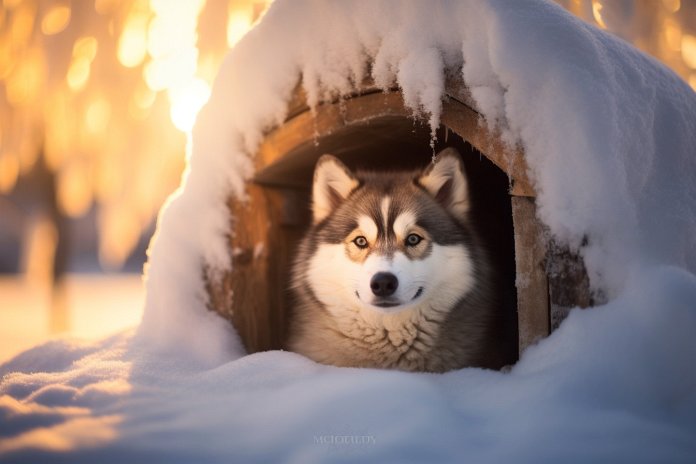
Winter is here, and while you may be cozy on the couch, have you considered how your dog is handling the cold weather? Not all dogs are equipped to handle chilly conditions, so it’s important to ensure they stay warm and comfortable all winter long.
Signs Your Dog isn’t Coping With the Cold
If you’re out for a walk with your dog on a cold morning, you may notice signs that they’re not comfortable. Shivering, whining, seeking shelter, and showing signs of pain or weakness are all indications that your dog needs to warm up.
Body Language
Pay attention to your dog’s body language for signs that they’re struggling in the cold, such as whining, shaking, dropped ears, and whimpering. Other signs include shivering, trying to escape the cold, being slow to move, and limping.
The History of Dogs Living in Cold Weather
While wolves thrive in harsh winters, many modern dogs struggle in the cold due to selective breeding. Some breeds, like Alaskan Malamutes and Siberian Huskies, were bred for cold weather tasks, but most dogs were not built for freezing temperatures.
The Science of Dogs Living in Cold Conditions
Even if your dog is a breed suited to winter weather, factors like coat thickness, size, weight, health, and cold-climate experience can affect their ability to handle the cold. It’s important to consider these factors when assessing your dog’s ability to endure winter weather.
Helping Your Dog Stay Warm in Winter
Protecting your dog from the cold is crucial to prevent hypothermia and frostbite. Provide shelter indoors, ensure their sleeping area is warm and dry, and consider heated pet mats for added comfort. Coats, jackets, and booties can also help protect them from the cold. Pay attention to any signs that your dog is struggling and respond appropriately to keep them warm and cozy.
Dogs have varying abilities to tolerate cold weather, and it is important for pet owners to be aware of their dog’s needs and provide appropriate protection to keep them warm and safe during the winter months.

Tips & Things to Know
1️⃣ Pay attention to your dog’s body language and behavior to determine if they are struggling with the cold weather. Look for signs such as shivering, whining, or trying to escape the cold.
2️⃣ Understand that not all dogs are built to withstand freezing temperatures. Breeds with thick, double-layered coats and more body fat may handle the cold better than others. Consider your dog’s size, coat type, and overall health when determining how well they can handle the winter chill.
3️⃣ Take necessary precautions to keep your dog warm and protected. Provide them with a warm shelter indoors, ensure their bed is dry and elevated off cold floors, and consider using heated pet mats for additional comfort. Use doggy coats or jackets and booties to protect them from wind chill and cold paws. Watch for any signs that they are struggling and respond quickly to keep them cozy.
Frequently Asked Questions, Answered ✅
1. How can I tell if my dog is not coping with the cold weather?
– Signs to look for include shivering, whining, trying to escape the cold, and being slow to get moving.
2. Which breeds of dogs are better equipped to handle the cold weather?
– Breeds like Alaskan Malamutes, Siberian Huskies, and St Bernards were bred to withstand freezing conditions.
3. What factors determine how well a dog can handle the cold weather?
– Factors include the dog’s coat thickness and color, size and weight, overall health, and previous experience in cold climates.
4. What can I do to help my dog stay warm in winter?
– Provide shelter indoors, ensure their bed is warm and dry, consider using heated pet mats, and dress them in a coat or jacket and booties for added warmth.
5. What are the risks of dogs getting too cold in winter?
– Dogs can be at risk of hypothermia, which can be fatal, and frostbite, particularly affecting the ears, tail, and paws.